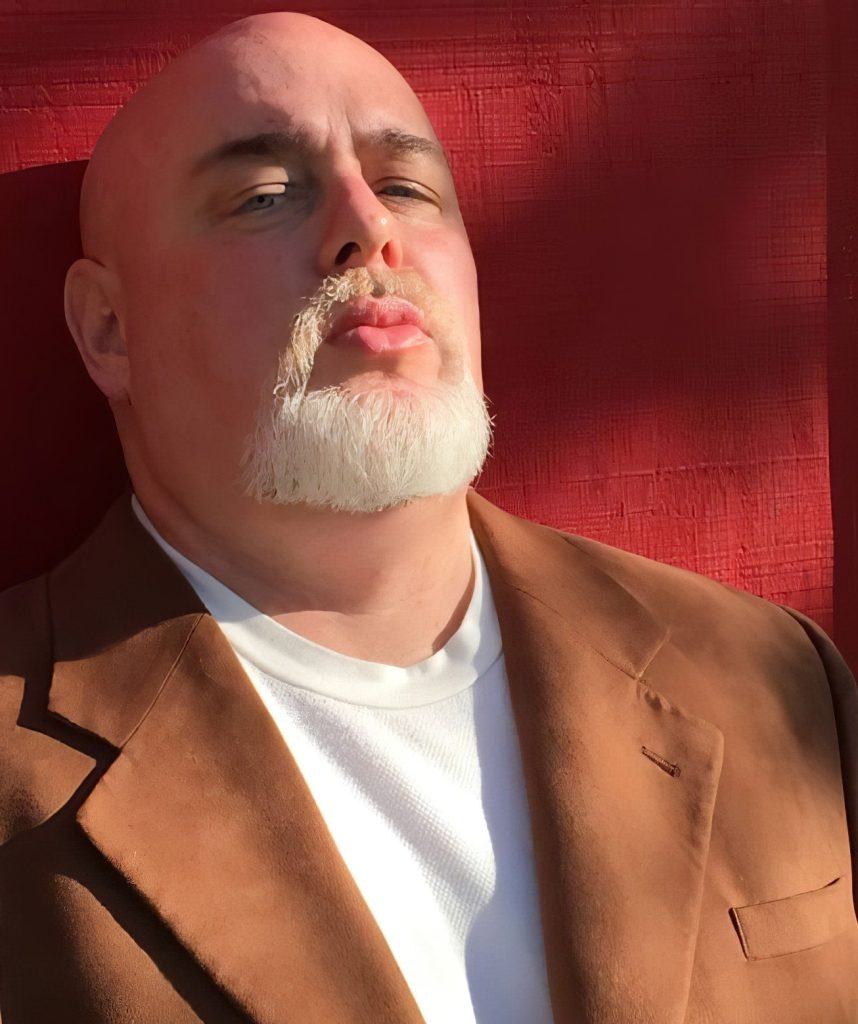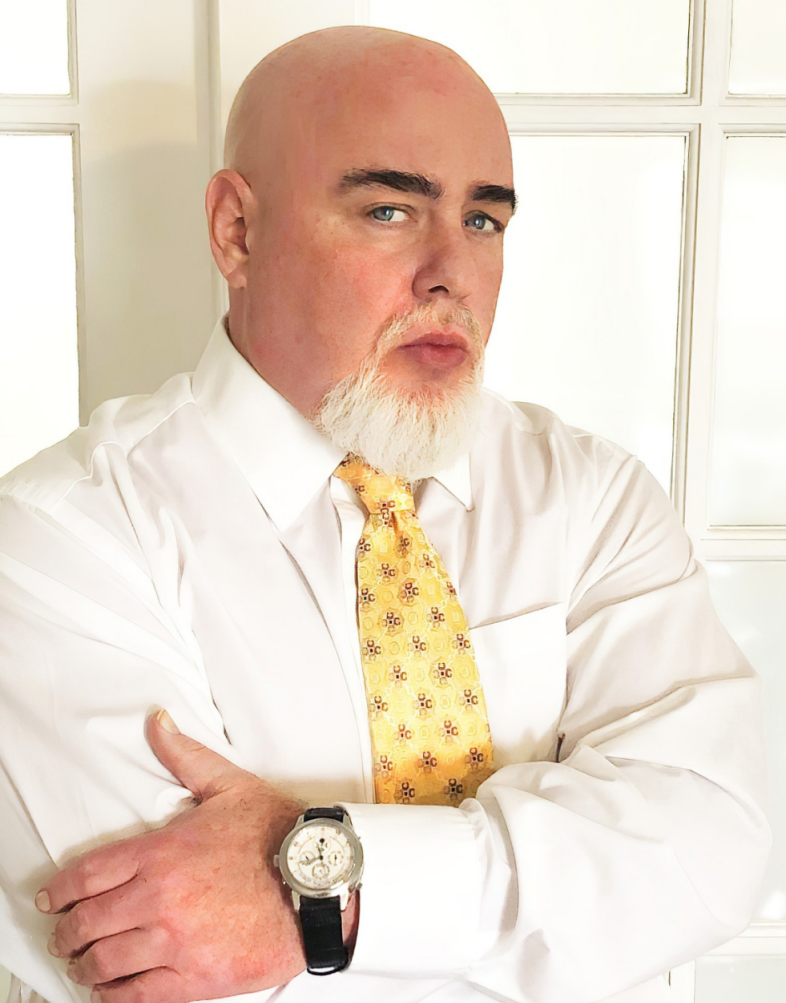“My small film project made its way to California before I did, eventually becoming a “treatment” for what would later become a Saturday morning cartoon. At just 16 years old, I was offered a position with the studio to begin once I completed my studies at Sheridan.”
Vin Lee
Vin Lee’s journey from a young artist with an unconventional start to a maestro of luxury is a story of curiosity, resilience, and adaptability. His venture, Grand Metropolitan, specializing in distressed debt assets within the luxury and jewelry industries, has drawn attention for its reported worth in the billions.
Despite reports of immense wealth associated with the firm, Vin maintains a humble perspective, emphasizing his role as a steward rather than a beneficiary. His story serves as a powerful reminder that greatness often emerges from unconventional beginnings and an unrelenting commitment to self-improvement and exploration.

A lot has been written about you and your companies in recent years. Tell us a little about what you do and perhaps something we haven’t read about you and Grand Metropolitan.
Vin Lee: I started my career at a very young age, in fact, during high school. I had formally studied animation in school with a grant from the Michigan Education Association, in partnership with a tutorial from a director at Hanna-Barbera Studios.
I was assigned a task to create a 3-minute hand-drawn film in color and sound, which turned out to be a significant and enriching experience during my sophomore and junior years.
My senior year was complemented by a computer animation curriculum, which led to my acceptance into Disney’s California Institute of the Arts, as well as Sheridan College in Oakville, Ontario. Surprisingly, despite all my exposure to computers, I didn’t learn how to type until I was almost 30 years old.
My small film project made its way to California before I did, eventually becoming a “treatment” for what would later become a Saturday morning cartoon. At just 16 years old, I was offered a position with the studio to begin once I completed my studies at Sheridan. This recognition also brought me another opportunity: the 1988 Calgary Winter Olympics.
My roommate’s brother had a production company in Toronto that was contracted for merchandise production for the event and invited me to be one of the artists. This happened shortly after I turned 18. At the time, my ambition was to earn $50,000/year doing exactly what I loved and driving a Fiero GT.
A year later, I found myself back at my parents’ house, taking night courses at the University of Michigan. My father, who worked as a liaison between trucking/railroad vendors and Ford Motor Company, got me a job as a loading dock supervisor at the Wayne Assembly Plant, which is famous for the Ford Escort.
Despite being recognized for my artistic talent by others, I wasn’t yet mature enough to handle the responsibilities of adulthood, much to the great disappointment of my family.
How does one go from working loading docks in Detroit and taking night courses to becoming one of the wealthiest individuals in the luxury world?
Vin Lee: First of all, it’s important to note that some of the wealthiest families in America, including pizza barons like billionaires Tom Monahan and Mike Illitch to A.
Alfred Taubman (Sotheby’s) and financiers like Dan Gilbert and Tom & Alec Gores have built their fortunes on those same streets. Secondly, Grand Metropolitan is a family office of which I am merely a steward for the term.
The family owns all the assets. Thirdly, I would prefer to be considered wickedly handsome rather than simply wealthy. I draw no income from the firm and never have since its founding.
In a similar manner to how Buffett’s Berkshire Hathaway, Gores’ Platinum Equity, and Gates’ Cascade operate, we are a small investment firm. Grand Met specializes in distressed debt assets, primarily in the luxury and jewelry industries. Basically, we acquire bankrupt jewelers.
One of my early major deals and ventures into the world of luxury goods was an $800,000 investment in DuQuet Jewelers when I was just 21. Despite growing up in an affluent family, it still took me a long time to become proficient in the language of luxury, including which fork to use at dinner.
There have been several sources that reported Grand Metropolitan to be worth $7-8 billion, and you are the CEO. That’s quite a leap from an $800,000 investment 30 years ago. First, I think our readers want to know how a kid pooled together that amount of capital, which even today is a significant sum of money.

Vin Lee: Certainly, I agree people often jump from “I was born” to “then speeding down the road in a Bugatti Veyron with keys to half of the nightclubs in LA in my pocket”… It’s hard to relate these stories in sequence as there are so many crossovers.
While I was still a teen, I also did the whole “tinkering” in my parents’ basement. I was trying to build a marquee for posters that would be both mechanical and internally lit, allowing me to display three movie posters on each side since I was not allowed to tape or pin anything to the walls.”
I pitched the product to Blockbuster Video executives, and they immediately expressed interest, committing to 6 units per location. This opportunity had the potential to generate $400 million in hardware revenue, along with an additional $40 million annually in service and support income.
My stake in my company, Cinemagic Marquee, would have made me richer and younger than Bill Gates when he became prominent after Microsoft (MSFT) went public. However, before all of this unfolded, I had received a buyout offer from my employment in the automotive industry.
This came after just a few years as a supervisor and then as a consultant tasked with reformatting the railroad facilities at five Ford Motor Company Assembly Plants. Then, the City of Detroit Pension Fund contacted me, discussing the $80 million misfortune at the Grand Traverse Resort. The newly installed management needed a rebrand and incentives to drive traffic five hours north during the winter months when golf was no longer a major draw.
Let me first clarify something before we continue. Grand Metropolitan assets are not “worth” $7-8 billion. Those figures represent cumulative revenue prior to our acquisition. For example, when Finlay Enterprises filed for bankruptcy, they generated over $1 billion in sales.
Heilig-Meyers Furniture reached $2 billion, Ellerines $1 billion, Bailey Banks & Biddle $200 million, Whitehall Co. Jewelers $400 million, and Samuels Jewelers $200 million, among others. Now, under our management and with the elimination of billions in debt and fixed overhead, those numbers all appear different.
Sprinkle in the pandemic and the addition of 50 more properties, each earning less than $100 million, and it presents a completely different profile. Personally, I do not identify as a billionaire.

It still sounds like a substantial company, especially for one man to manage. Going back, how did you make your ‘first million’ to be able to buy DuQuet Jewelers? Was it the Blockbuster Video Deal with Cinemagic Marquee?
Vin Lee: A little history about The Grand Traverse Resort: it was conceived and built by Bloomfield Hills, MI attorney Paul Nine. A glorious tower rising up above the sandy shores of Lake Michigan and surrounded by a Jack Nicklaus PGA Golf Course, ‘The Bear.’ Just like a scene out of Hoffa, the Pension Fund had lent Mr. Nine over $40 million to build GTR. After 20 years of operating, those loans still hadn’t been honored and had accrued to $80 million.
The Pension Fund pushed the Resort into receivership in an effort to recover its investment and turn the property around. I was brought in to repackage and remarket GTR, arresting the debt service in a multi-year contract worth a mini- mum of $10.8 million ($3.6 million/year for three years) plus 22% of the $25 million revenue, etc.
All in all, if I hit certain marks, the total contract would yield about $50 million for me by the age of 22. This would forever link my name and reputation to one of the most exclusive properties in that part of the United States.
To celebrate the deal and this incredible opportunity, I walked into DuQuet Jewelers to purchase a Rolex President. Several hours later, I emerged from the diamond room, having made the investment of $800,000.
The first order of business was to open another location at Grand Traverse Resort. It was an incredibly exciting time in my life.
It sounds like you had multiple projects going on at the same time as far back as your teen years. What happened next? How did you progress to the next level of owning a chain of jewelry stores?
Vin Lee: I immediately set up an office in the newly remodeled DuQuet showroom, which had been stocked with decades’ worth of Modern Jeweler, JCK, and National Jeweler Magazines. I spent years sifting through those publications, learning about the industry and industry insiders. I learned about how conglomerates like Zale Corp were built and how the bankruptcies of hundreds of leading companies were executed for almost a century.
This backroom Ph.D. also provided a macro and micro view of trends in the commodities markets as well as fashion and couture jewelry. I was determined to climb the ranks in one of the most closed and challenging industries in the world.
It would be a decade and a divorce later before I would be in a position to make a run for Samuels Jewelers Corp., the fifth-largest retail jewelry group in America, with about $200 million in revenue from 200 stores under the Andrews, Schubachs, Rogers, and Samuels Diamonds brands.
My ambitions included the sell-off of the $14 million corporate headquarters, a $140 million marketing partnership with Bulova Corporation (pre-Swatch), and a proposed merger with the then publicly-held Reeds Jewelers (RJI). Prior to Samuels, I was involved in deals for Town & Country, Michael Anthony Jewelers, OroAmerica, and many others as auctions and bankruptcies prevailed throughout the 1990s.
But it wasn’t until I was brought the trifecta: Montgomery Wards, Service Merchandise, and Heilig-Meyers Furniture, all of which were being put into Chapter 11.
I was introduced to the brother of the CEO of CALPERS, who was responsible for wrangling buyers for the assets. Many people, especially jewelry insiders, have no idea that Heilig-Meyers is one of the largest jewelers in the country.
They had originally offered such great credit terms that they decorated their furniture showrooms with accompanying jewelry counters, earning them an additional $400 million in sales to their $2 billion credit facility.
In addition, they had $925 million in long-term receivables-quite a payday for someone with the patience and ability to collect those funds indefinitely.

So, what does Grand Metropolitan look like going forward post- pandemic? Are you still operating the same business model as you did when you were starting out? Do you see your role changing since your heart attack and the loss of your legs last year?
Vin Lee: It has been a time of significant change for millions of families around the world since the pandemic and the inflammatory political environment. My family is no different.
I do continue to apply the same metrics to our acquisitions as always, preferring to enter into negotiations only with entities that won’t incur additional debt service or elevated overhead and redundancies.
In recent years, I have found myself more interested in “passion” assets in our portfolio, such as art, cigars, caviar, and most recently, the addition of the Boulmiche brand to our ranks.
You’ll remember this Beverly Hills Boutique on Rodeo Drive where Julia Roberts was snubbed in the movie Pretty Woman. Our plans involve a significant push into branded merchandise, including a shoe line, fragrance collection, and popup locations within department stores, thanks to our relationships through Finlay Enterprises.
This interview was originally published on ValiantCEO.
Darlene Spencer
I'm Darlene Spencer, a seasoned writer specializing in corporate affairs, business ethics, and leadership. With a keen interest in the intricate dynamics of corporate environments, I delve into topics ranging from corporate news and finance to corporate culture and governance. My background in business and my passion for ethical leadership and effective management drive me to provide insightful analysis and thought-provoking commentary.



